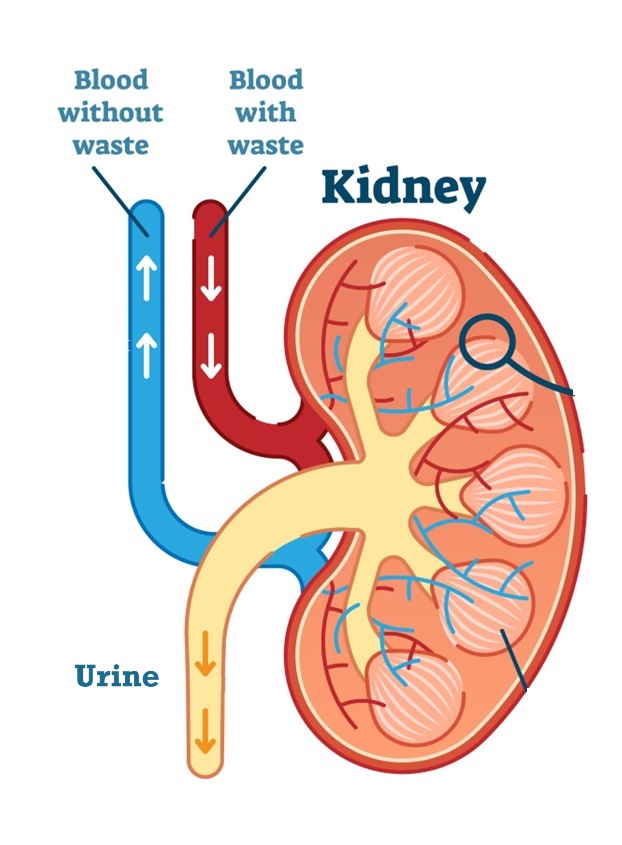
This image illustrates the blood flow through the kidney and the process of urine formation. It highlights how blood enters and exits the kidney and the path of urine excretion.
Key Components:
Blood with Waste (Red):
- Blood containing waste products and excess substances enters the kidney through the renal artery. The renal artery branches into smaller arterioles and capillaries within the kidney, where filtration occurs.
Blood without Waste (Blue):
- After filtration, the cleaned blood, now devoid of waste products, exits the kidney through the renal vein. This blood returns to the general circulation, maintaining the body’s overall homeostasis.
Kidney:
- The kidney itself contains millions of nephrons, the functional units that filter the blood. Each nephron consists of a glomerulus (where filtration begins) and a series of tubules (where reabsorption and secretion occur).
Urine (Yellow):
- The filtrate that passes through the nephron is processed to form urine. The urine collects in the renal pelvis and is funneled into the ureter, which carries it to the bladder for storage until it is excreted from the body.
This diagram demonstrates the dual functions of the kidney: filtering waste from the blood and producing urine to expel these wastes from the body.
Quiz
Please note that our articles are not intended to guide personal health decisions.
This content has been curated by Renes Care. Unauthorized use or reproduction is prohibited.
© Renes Care. All rights reserved.
